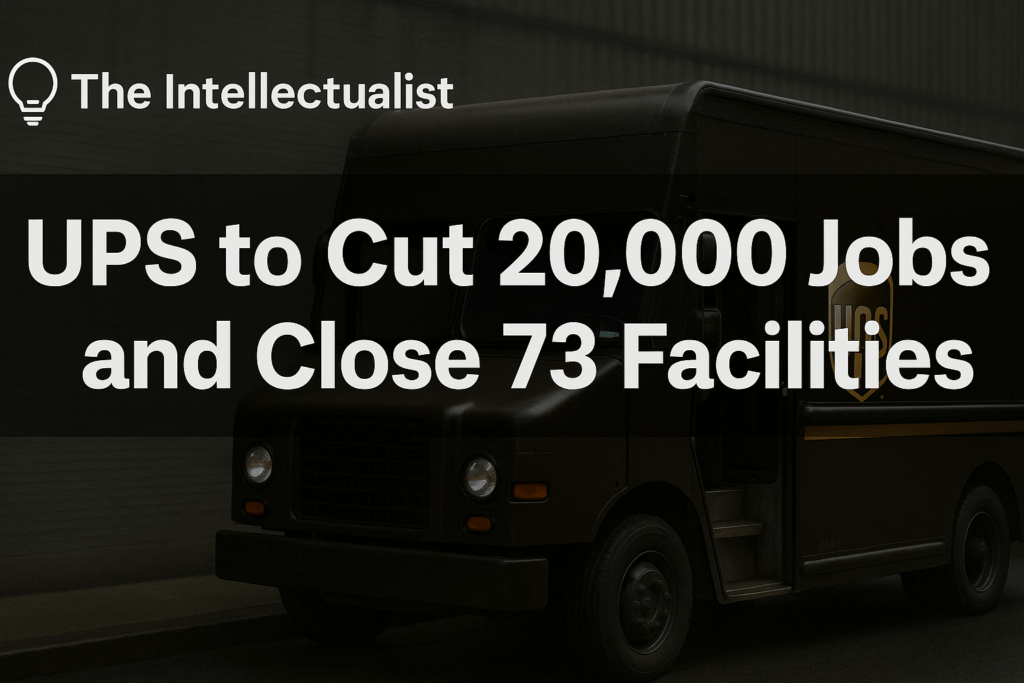UPS Slashes 20,000 Jobs as Amazon Volumes Plummet

United Parcel Service (UPS), one of the world’s largest logistics companies, has announced it will cut 20,000 jobs and shutter 73 of its U.S. facilities by mid-2025. The decision, first reported by CBS News in a report by Mary Cunningham and edited by Aimee Picchi, was published on April 29, 2025, and reflects a strategic shift away from high-volume, low-margin deliveries — specifically with Amazon, its largest customer.
The layoffs will affect just over 4% of UPS’s global workforce of 490,000 employees and are part of a broader realignment aimed at improving profit margins. In an earnings call held Tuesday, Chief Financial Officer Brian Dykes explained that the company intends to “expand [its] U.S. Domestic operating margin and increase profitability.” By consolidating its operational footprint and shifting toward a more selective contract portfolio, UPS hopes to stabilize earnings and reduce its exposure to volatile high-volume clients.
This cost-cutting initiative coincides with a deeper shift in UPS’s relationship with Amazon. In January 2025, the two companies agreed to reduce delivery volume by over 50% in the second half of 2026. UPS officials insist the decision was strategic, not reactive, and aimed at improving “revenue quality.” A company spokesperson confirmed to CBS MoneyWatch that UPS initiated the volume reduction to prioritize higher-margin clients.
According to regulatory filings released Tuesday, UPS expects the layoffs and building closures to generate $3.5 billion in savings this year. The closures, which will be completed by the end of June 2025, could be followed by additional facility reductions depending on volume and operational forecasts.
Market response to the news was modest. UPS stock slipped just over 1%, closing down 1.13 cents or 1.16% in early trading. Investors appeared to take the announcement in stride, viewing the layoffs and restructuring as part of a long-term strategy rather than a reactive measure.
Yet the implications are significant for both the labor market and the logistics industry at large. The cuts raise questions about job security in the warehousing and delivery sector, especially as major corporations like Amazon increasingly internalize their delivery operations. With Amazon building out its own logistics infrastructure, traditional carriers such as UPS and FedEx are being pushed to pivot toward more stable, diversified client portfolios.
Meanwhile, UPS is navigating external economic pressures beyond its Amazon exposure. In its Q1 earnings release, the company cited new international trade barriers as a potential headwind. The Trump administration’s expansion of tariffs in 2025 has already impacted cross-border commerce, a risk UPS highlighted explicitly. To mitigate customer disruption, the company has launched a new tool — UPS Global Checkout — that enables shoppers to view shipping costs, import duties, and taxes upfront, improving pricing transparency and reducing friction in global transactions.
UPS’s decision to reduce dependency on Amazon also aligns with its growing focus on small business clients, premium parcel services, and international supply chain contracts that offer higher margins and better volume control. Industry analysts suggest this rebalancing could improve UPS’s pricing power over time, even as it shrinks its operational footprint in the short term.
As 2025 progresses, UPS will be closely watched not only for its financial results but also for how it manages labor transitions and facility consolidations. While the job cuts are substantial, they may be the first of several waves, depending on how quickly UPS can rebalance its client base and absorb tariff-driven shocks to global shipping flows.
In the broader context of U.S. labor policy and trade realignment, UPS’s actions mark a strategic inflection point — one that reflects shifting alliances between retailers, carriers, and global supply chain actors in an era of economic nationalism and vertical integration.

